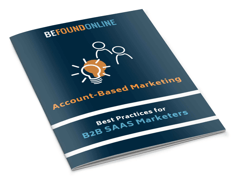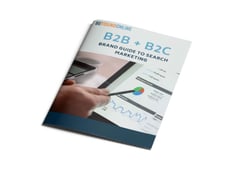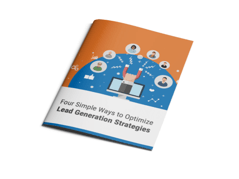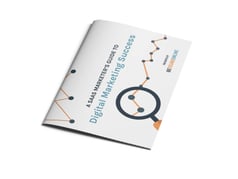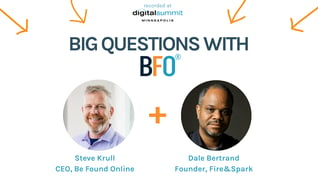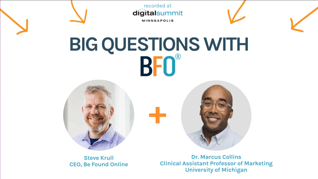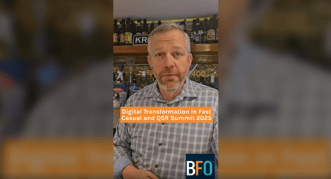M&A: Understand the Full Value of a Brand with Digital Due Diligence | BFO
December 03, 2020
7 Minute Read


Digital due diligence plays a vital role in the success of a merger and acquisition. The study often includes an analysis of the brand’s mission, history, culture, and financials. Your financial analysis looks at the “books.” In 2020, you also want to include digital analysis, or what we and others call digital due diligence.
What is Digital Due Diligence?
During a merger and acquisition analysis, digital due diligence takes a comprehensive look at a brand’s digital marketing, including organic, paid, social, and eCommerce efforts to determine the financial risks and opportunities and assign a realistic value.
Digital Due Diligence as Key Valuation Metric
Digital value may seem most relevant to eCommerce brands. Today’s reality, however, is different. With few exceptions, every brand relies on its web presence to create leads, maintain customer relationships, and often sell.
Many elements contribute to the value of a digital presence. A brand’s goals and its audience also play a role as they determine which factors have value.
The effectiveness of these elements and how they perform determines the risk or opportunity in every merger and acquisition.
Company-Specific risks and Opportunities Related to Digital
Successful digital marketing translates into dollars. As such, analyzing the strengths and weaknesses of a brand’s digital presence exposes risk and reveals opportunity.
Some of the digital specific risks include:
Technology infrastructure. Does the website have the technical elements in place to maximize search and usability?
Content sources. Who produces organic, paid, and social content? Is there agency reliance – and cost?
Data Integrity. Are they measuring the right KPIs?
Sustainability. Is the digital effort scalable, repeatable, and transferable to your team?
As you investigate potential risks, you may find the answers prove you have an incredible value and opportunity.
Let’s take a more in-depth look into the elements of the digital analysis.
Key Elements of Digital Due Diligence Analysis
Ideally, you want to see a diversification in traffic sources from organic and paid media. Ecommerce sites deserve special attention too. Having any of these, however, does not mean value.
- A brand can have a website and poor ranking and search results.
- Paid media campaigns may have a weak return on ad spend (ROAS).
- Having an eCommerce site does not mean profit.
For this reason, every analysis should look at up to three elements of a brand’s digital presence: organic (SEO), paid media, and eCommerce (when applicable).
Organic Search, AKA SEO
Evaluating SEO can be tricky. A page’s rank can be an indicator of SEO value. At the same time, simple fixes to certain technical elements such as page speed can have a dramatic effect. For example, a site can have exceptional content, but slow loading pages kill engagement and rank.
A basic SEO audit looks at:
- Competitive profile
- Ranking & traffic source analysis
- Upside projections
- The offsite SEO risk profile
A more in-depth analysis evaluates:
Website Design
Everything revolves around user experience. A well-designed website makes it easy for a user to find what they’re looking for.
Technical SEO
These elements make your pages work and indexable. How is page speed? Do pages have proper meta-data and redirects to ensure users can reach the pages.
We also evaluate platform scalability for SEO tools and your website content management system (CMS).
Content Production
What resources are used to produce content? Resources include platforms and people, and each comes with a cost that figures into consideration.
Linking
You want to see quality internal linking as well as strong backlinks. Digging into linking also involves identifying if a partnership reliance is in place to produce linking.
Compliance Risks
Does your site meet ADA compliance? Do you have the appropriate messaging to meet CCPA and GDPR regulations?
Paid Media
Google, Facebook, LinkedIn, and other channels make it simple for anyone to run paid media campaigns. Anyone can look at the ROI. Return on ad spend (ROAS) can be easily calculated too.
These numbers, however, don’t reveal the risk or opportunity. They only show the results for the campaigns run.
A paid media audit finds risk, opportunity, and value. For example, our approach looks at three elements of the paid media campaigns – whether they are on a search engine (Google Ads and Bing Ads) or on a social media platform.
The three elements we look at are:
Campaign Tactics
Every industry and business, not to mention their audiences, is unique. Each one requires its own tactics. In most cases, every campaign goal requires a unique approach to guarantee results.
As we look at campaigns, we answer questions like –
- Are the campaigns best in class?
- Do they miss the fast conversions or “low-hanging fruit”?
- Does the paid media take advantage of tools retargeting and custom audiences?
Scope of Platforms
Many businesses invest heavily in LinkedIn ads and miss Facebook opportunities. (Yes, businesses can do very well with properly targeted Facebook Ads.)
We look at whether there is an over-investment in one area over another, like search or social. This part of the analysis compares the platform mix with successful companies in the industry to see if there may be missed platform opportunities.
Scale Potential
We evaluate metrics like ‘impression share.’ This metric tells us how much additional volume might be available at current efficiencies or whether you’ve diminishing returns.
Ecommerce
Assigning a value to an eCommerce brand or a company engaged in eCommerce continues to present a challenge. Investment history is full of eCommerce promises never fulfilled.
The danger lies in failing to apply a proper valuation. Although new ideas and opportunities can be attractive, we believe a Traditional Discounted Cash Flow (DCF) Valuation Model can uncover an eCommerce brand’s accurate value.
The key is measuring the relevant metrics.
For example, with eCommerce companies, we look at:
- Traffic growth estimates based on impression share data
- Seasonality
- Conversion rates
- Average order value
- Bounce rate estimates
- Paid to organic conversion
With this data, we can make revenue projections.
- How do the factors above affect the traffic? More traffic typically means more revenue, but weak results may mean poor returns. We take these data points and can provide revenue estimates.
- What is the cost of acquiring a new customer? We base this number on the cost-per-click to bring a user to your website.
Then there is the question of the discount rate. Based on our experience, we believe discount rates reside somewhere between 15%-30%, though the numbers vary by industry.
Approach and Methodology for Digital Analysis
Every aspect of our approach and methodology focuses on value.
For organic and paid media, traffic costs need to align with long-term customer value. Your cost per acquisition (CPA) must be less than the lifetime value (LTV) of every customer. Paid media especially should target customers with the highest lifetime values.
For eCommerce, the DCF analysis can value digital marketing traffic. The key, however, is to adjust the variables in the model correctly for the brand. Product margins, search demand, website quality, and paid media efficiency can be measured, but they must also be compared to their industry.
A big warning sign to look for is eCommerce companies that rely on paid media. Ecommerce markets are too competitive to make a brand viable that relies on paying for new business. Paid media may be essential during growth and development, but direct, organic, and referral traffic must be a significant source of leads for mature companies.
Finally, every business that relies on online traffic for revenue needs the best possible return on spend. We look for those segments in the customer base with the highest conversion rates. They typically deliver the highest returns on investment.
Make Digital Due Diligence Part of Your Evaluation Process
The lure of eCommerce and new digital companies can muddy the waters of due diligence. By adding digital due diligence to your process, you protect yourself against hot opportunities that lack a strong foundation.
You also gain a great deal of data and insight you can apply right away to jumpstart your marketing.
And finally, you may uncover incredible opportunities that can create immediate capital returns.
Digital due diligence may be a newer concept, but it helps you understand the real value of a business. Have questions or want more details? Contact us.

Dan Golden
Dan Golden is a veteran digital marketing executive & speaker. He liked to predict the future of digital marketing and is damn good at it. Beyond trendspotting, he has an insatiable desire to know what works and that means spending time auditing accounts, testing tactics, and diving into analytics. Dan is also a Forbes and HuffPost contributor, as well as a Lecturer at Northwestern University and DePaul University.
CATEGORIES
SUBSCRIBE TO OUR BLOG
Stay up to date with the latest industry best practices in digital marketing!
















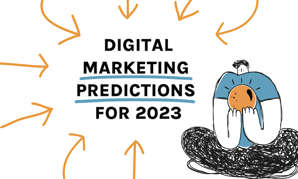

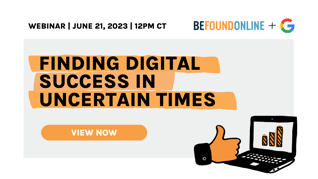




.png?width=339&height=179&name=Webinar%20Banner%20(1).png)



.png?width=339&height=179&name=July%20Webinar%20(Newsletter).png)

.png?width=339&height=179&name=Webinar%20Banner-April-02%20(1).png)
%20(4).png?width=339&height=179&name=Webinar%20Banner-May-02%20(1)%20(4).png)




.png?width=339&height=179&name=March%202023%20Webinar%20Ad%20(autoresponder).png)

